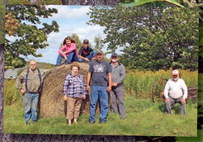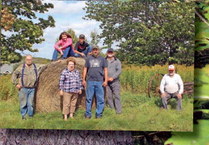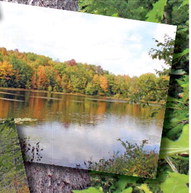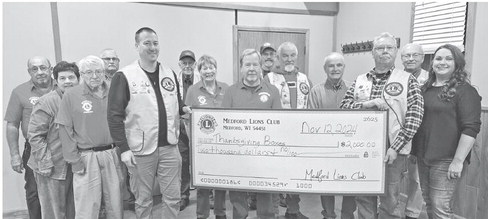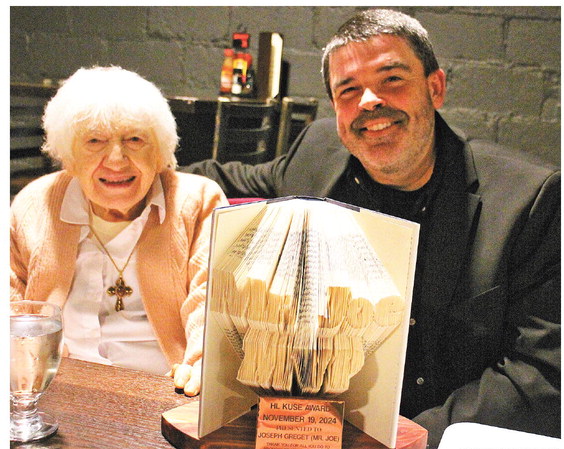Hill Farm in Westboro marks 100 years
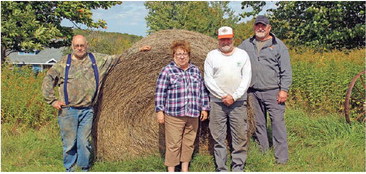

From its base looking up, the giant white pine tree on Hill family homestead appears to reach forever into the skies.
Science tells us that white pine trees max out at about 210 feet in height. A visitor could easily imagine the giant towering over the other trees in the family’s woodlot a century ago when the Hill family settled here, a holdover that was somehow skipped in the cutover of prior decades that saw the forests of Wisconsin laid low to build the great cities of the midwest.
The tree still stands proudly and tall looking over the rolling hills, pocket lakes and parklike hemlock groves that cover the 240 acre landscape of the Hill Farm.
The farmstead is still there, celebrating 100 years and earning its Century Farm status.
The farm’s story begins with John Hietamaki immigrating to the U.S. from Finland in about 1900. Like many immigrants he changed the name when he came to the United States, choosing to change it to Hill (Hietamaki means ‘sand hill’ in Finnish).
His wife, Kaisha (Katherine), came to Republic, Mich. in the United States in 1904 with their two children, Matt and Anna, aboard the SS Cedric.
The manifest at their port of entry lists Kaisha and her children as having $20 to their name, along with them declaring that they were neither anarchists or atheists nor that they were crippled or otherwise disabled in any way.
Later the family moved to Westboro, to homestead and purchased the first 60 acres in 1917 from five families for the sum of $1,500.
John and Katherine had seven children, Matt, Anna, Niilo John, Helmi, Martha, Gust and Reuben. It is Reuben’s descendants who continued the family farm. John and Katherine continued to purchase land and obtained other land on back taxes. The family farmed in Westboro and John and Katherine lived there the rest of their lives.
Reuben Hill met Saima Arkola at a barn dance in Westboro and married in June of 1939. They initially lived in Chicago and moved back to Westboro to help Reuben’s elderly parents on the farm. In 1943, Reuben and Saima purchased the farm and land from his parents. Reuben and Saima operated the guernsey dairy farm until 1975. Reuben and Saima had seven children, Jim, Ron, David, Diane, Sandy, Jack and Roger.
Diane’s son, Jesse Niggemann, continues organic crop farming on the land. Sap for maple syrup is collected on the farm, along with growing Christmas trees, logging, and raising milkweed for the monarch butterflies.
The current owners are Diane Niggemann, David, Jack, Roger, and fourth generation, Mark and Scott Hill.
“We were poor growing up, but then again everyone else was poor too,” said Jack Hill during a recent tour of the family’s farm. He points out the location of what used to be the summer kitchen. Like most homes of the time, the house’s main source of heat was a wood cookstove. In the summer months cooking was done in a nearby shed to keep the home from overheating. He points to where the original house stood, the “new” one was built in the 1950s by his parents, noting the location of the outdoor well and of the outhouse they used growing up.
The family’s barn has long since come down, but the oat thresher that can be seen in old photographs is still there and the side rake that has been used by generations for making hay on the land is still in use. In the milk house, now a storage shed, are some of the old milk cans with their pick-up number painted on them.
Jack’s pride in the land is evident as he points out the lake where he nearly drowned as a child only being pulled to safety thanks to his sister Diane. He points out the areas that used to be sheep pastures which are now actively being cultivated for milkweed in order to help butterfly populations, explaining that his brother will wait until the seed pods are formed and then go through with a machine to further spread the seeds.
The blue tubing of maple sap collection lines snake through the trees connecting to collection points in a gravity- fed system. He explained that they partner with another nearby property owner to provide sap in exchange for a share of the finished syrup.
Jack talks of growing up on the property and points to a distant fire tower and talks of times bomber pilots would make practice runs there. He tells the story of how the area was heavily used by the air force for practice runs because its terrain was similar to that of Germany. You can imagine in the clear blue autumn sky a low-flying B-52 bomber circling around and releasing a load of aluminum-foil chafe that was used to baffle ground defenses.
Memories, both old and new, are connected to the rocky soils of the Hill Century Farm in Westboro and the members of descendants of John and Katherine look forward to decades more memories to come.


